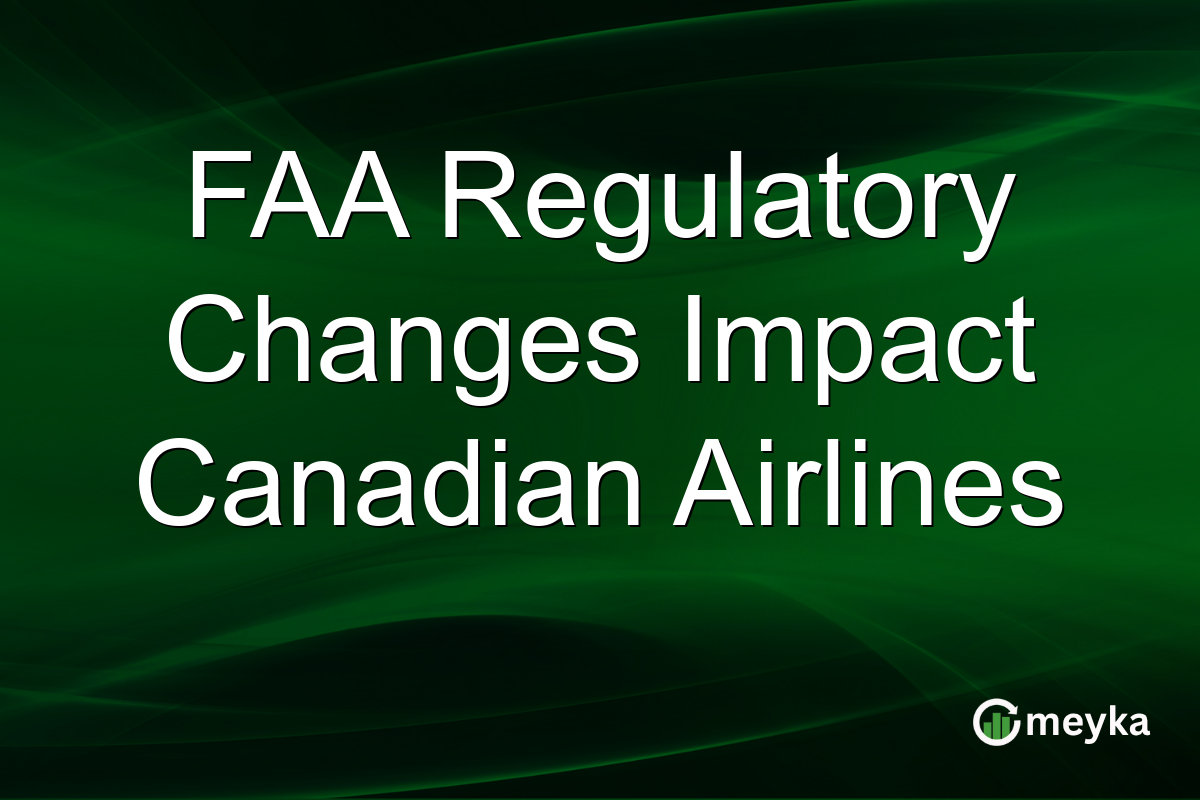FAA Regulatory Changes Impact Canadian Airlines
The Federal Aviation Administration (FAA) has recently implemented regulatory changes that significantly impact Canadian airlines. These changes are trending in the aviation industry due to their focus on compliance and crew rest rules. As Canadian airlines adjust to new FAA aviation regulations, they aim to align with updated cross-border safety protocols. Let’s explore how these developments affect the industry.
Understanding the FAA Regulatory Changes
The new FAA regulatory changes target several areas, including crew rest rules and overall compliance. By updating these regulations, the FAA aims to harmonize safety standards across international borders. This is crucial for Canadian airline compliance, as these airlines often operate flights into the United States. The changes emphasize enhanced safety, aligning with global standards to ensure passenger and crew welfare. The FAA’s focus includes updating crew rest rules, which stipulate mandatory rest periods for flight personnel. This is part of a broader strategy to address pilot fatigue, an ongoing concern in aviation safety. According to a recent CNBC report, these changes aim to improve overall operational efficiency and safety standards.
Implications for Canadian Airlines
Canadian airlines are strategizing to meet these updated FAA aviation regulations. This involves significant adjustments in scheduling and operational practices to comply with new standards. The focus on Canadian airline compliance ensures that airlines maintain access to U.S. airspace without disruptions. For example, Air Canada and WestJet, two prominent players, are realigning their policies to meet these regulatory frameworks. An article in Bloomberg noted that these airlines are investing in training and additional staffing to adhere to the updated crew rest requirements. This is pivotal for maintaining operational integrity without compromising safety or service quality.
The Role of Cross-Border Aviation Safety
Cross-border aviation safety is at the core of these FAA changes. The objective is to create uniform safety protocols between the U.S. and Canada, thereby facilitating smoother operations for airlines that frequently cross these borders. According to Reuters, the updated regulations enhance coordination between U.S. and Canadian aviation authorities, fostering greater alignment in safety measures. These changes not only ensure compliant operations but also reinforce international collaboration in aviation safety. Canadian airlines, in response, are modifying their internal processes to ensure seamless integration of these regulations, impacting everything from flight scheduling to inter-agency communication.
Long-Term Benefits and Industry Outlook
Despite the immediate challenges of adaptation, the long-term benefits of these FAA regulatory changes are promising. Enhancements in safety and operational standards are expected to lead to more sustainable and efficient airline operations. For Canadian airlines, this means better service quality and increased passenger confidence. The updates also present opportunities for growth and innovation in airline operations. By meeting these new standards, airlines can advance toward more sophisticated aviation technologies and practices. This ultimately contributes to enhanced global competitiveness in the aviation sector.
Final Thoughts
The recent FAA regulatory changes bring significant implications for Canadian airlines. By focusing on compliance, crew rest rules, and cross-border safety collaboration, these changes promise enhanced safety and operational efficiencies. While the transition poses challenges, the benefits for the aviation industry are substantial. Meyka, with its comprehensive market analysis tools, remains an essential resource for understanding these regulatory impacts and making informed decisions in an ever-evolving industry landscape.
FAQs
The changes focus on crew rest rules, compliance, and cross-border safety alignment. These updates ensure uniform safety standards between the U.S. and Canada.
Canadian airlines like Air Canada are realigning their operational practices and investing in training to meet the updated regulations. This includes modifying schedules and enhancing crew rest policies.
The long-term benefits include enhanced safety, increased operational efficiency, and improved passenger confidence. These updates also position airlines for growth and innovation in the aviation sector.
Disclaimer:
This is for information only, not financial advice. Always do your research.






